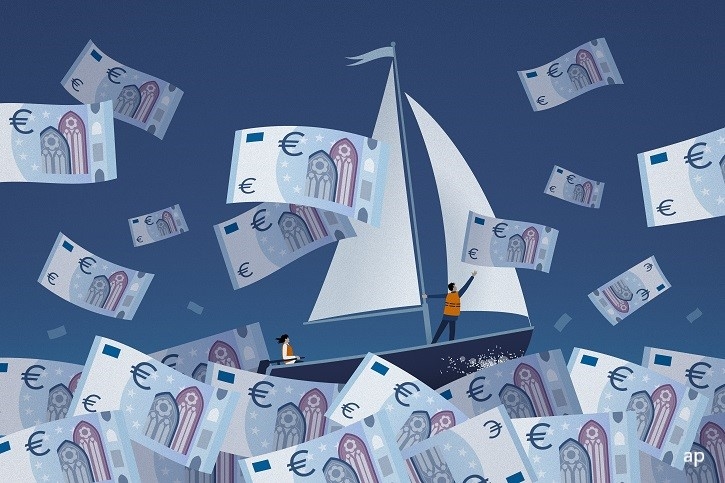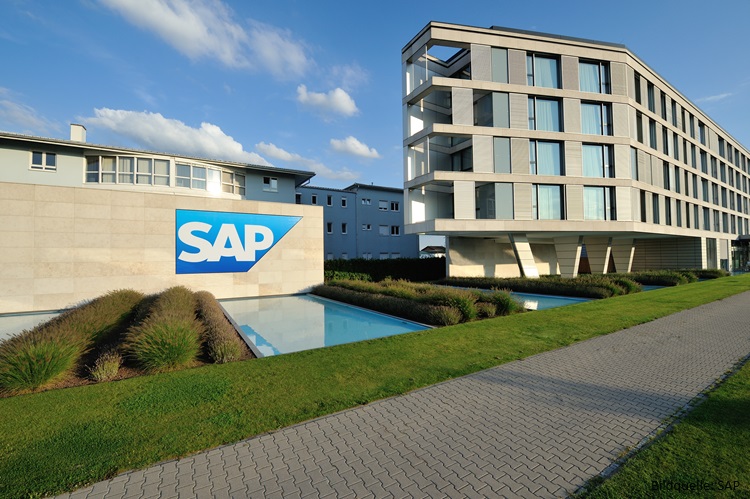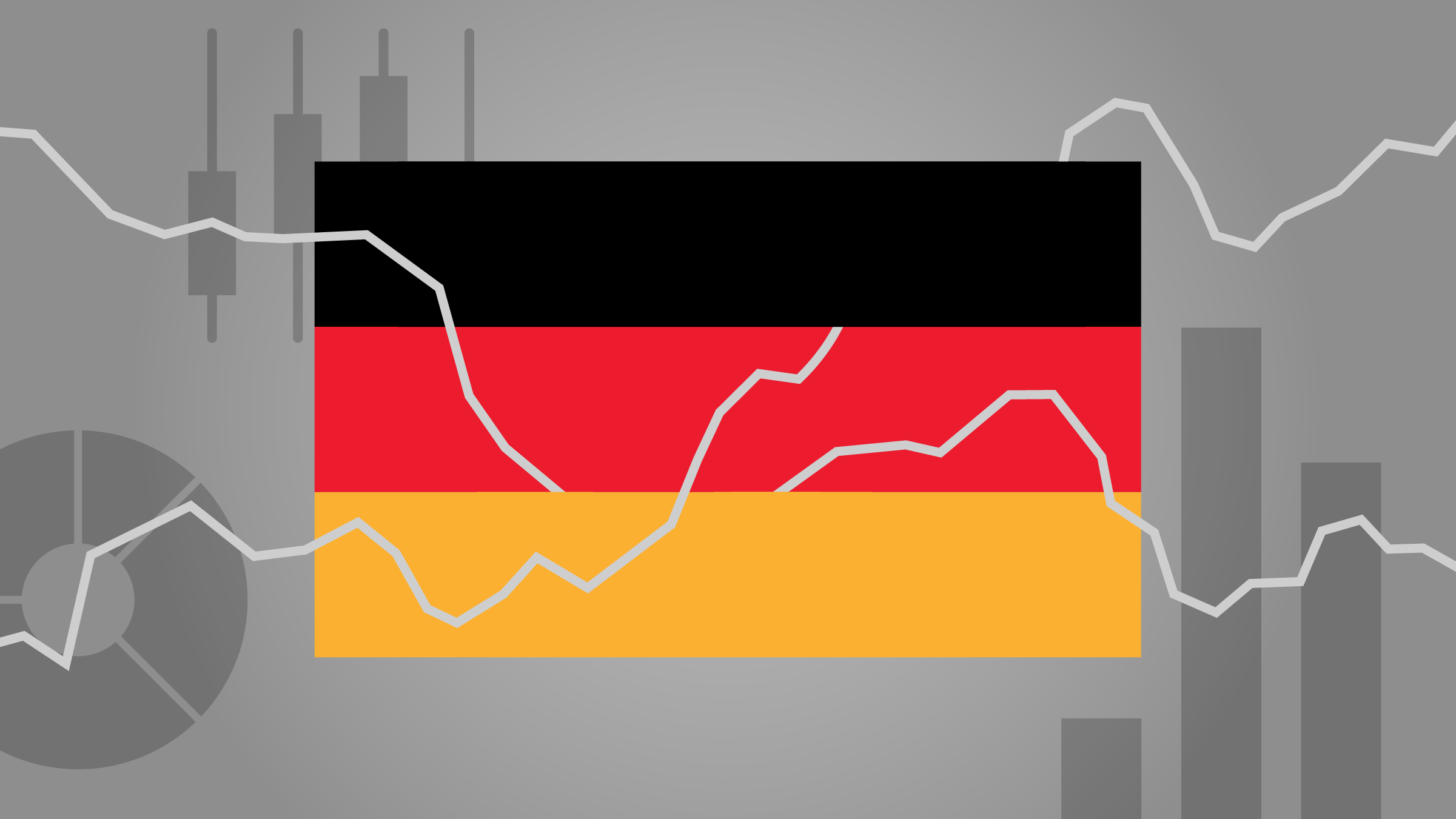Rolle im Portfolio
The iShares EURO STOXX Small ETF provides exposure to eurozone small-cap equities. The index correlated 90% with the EURO STOXX Large Index and 91% with the MSCI World USD Index over the last three years; hence diversification benefits appear limited.
In contrast to large and mid cap companies, small caps typically generate most of their revenue regionally. Therefore, this ETF might be a purer play on the eurozone economy compared to ETFs tracking mid or large cap indices as they often generate more than 50% of their revenue from outside Europe.
As the EURO STOXX Small Index is well diversified across individual holdings and sectors, the ETF can best be deployed as a core holding complementing mid- and large-cap equity holdings.
For tactical purposes, this ETF might be suitable for investors believing that large cap companies will deploy their cash reserves through acquisitions in the hunt for external growth targeting small- and mid-cap companies.
Before considering an investment, investors should review their existing portfolio holdings to avoid unintentionally creating concentrated single country exposure. This is especially the case for Germany (which represents 27% of the index’s value) and France (24%).
Fundamentale Analyse
During recessions, large-cap companies will seek to cut costs and preserve cash, leaving them with huge cash reserves after the crisis. In the quarters following the crisis, many of these same companies unload their cash by acquiring small cap firms, which in part explains the outperformance of small caps coming out of recessions. Valuations for the EURO STOXX Small Index have increased after hitting a near-low P/E ratio of 9.9 in November 2011. As of this writing, the index trades at a P/E multiple of 14.8, compared to 14.5 for the EURO STOXX 50 Index. The gap between the two indices has narrowed recently, as large cap companies have got more expensive.
Financials are the largest sector exposure within the Index, representing 28% of its value. Banks and real estate firms represent about 70% of the overall financial sector exposure. This should come as no surprise, as real estate companies are usually found in the small- to mid-cap size segment. Small cap companies tend to generate most of their revenue regionally. As such, the fortunes of European small caps remain heavily conditioned by the twist and turns of the Eurozone’s sovereign debt crisis.
Consumer services and consumer goods represent a combined 29% of the index’s value. This sector’s performance might be threatened by the ongoing uncertainty surrounding the sovereign debt crisis. In fact, recent data for the consumer sector has been rather mixed. Retail trade rose by 1.0% m/m in the Eurozone in May. According to Eurostat, the overall gap between retail trade within the Eurozone and the EU has continued to widen since the financial crisis, highlighting the pressures facing Eurozone consumers. Moreover, the Eurozone unemployment rate increased to a new record high of 12.2% in May. In particular, the high level of youth unemployment has become a serious concern both at an economic and political level. According to Morningstar’s equity analysts, the consumer sector trades at a small premium to fair value.
Given the current mixture of high unemployment, falling incomes and the ongoing sovereign debt crisis, it is likely that the Eurozone will continue to be plagued by uncertainty in the coming months. Indeed, the IMF has raised concerns about the Eurozone in their annual economic review. In particular, the IMF urged the ECB to spur demand through monetary easing, arguing that further rate cuts would support demand across the monetary union and address potential deflationary pressure. On this latter point, however, it is worth noting that Eurozone inflation is expected to increase to 1.6% y/y in June after hitting a low of 1.2% in April.
The IMF expects GDP to contract by 0.6% this year before rebounding 0.9% next year. Risks to this outlook are skewed to the downside, with the slowdown in Emerging Markets a key concern. For example, the slowing Chinese economy could be particularly negative for Germany’s exports. In fact, after two consecutive months of falling manufacturing orders, many economists have lowered production forecasts. German export of goods was down 2.4% m/m and 4.8% y/y in May, while Eurozone exports dropped by 9.6% y/y. Despite the recent weak data, economists remain optimistic on Germany’s economic outlook, forecasting GDP to expand by up to 0.5% in 2013.
Indexkonstruktion
The EURO STOXX Small Index represents eurozone stocks from the STOXX Small 200 Index. The STOXX Small 200 Index is defined as the 200 smallest stocks of the STOXX Europe 600 Index, which is a free float market capitalisation weighted index representing over 10 sectors across more than 10 countries. The EURO STOXX Small index includes about 100 stocks, caps each holding at 20% and is reviewed quarterly. As of writing the index’s largest single country exposure is Germany (27% of the index’s value), followed by France (25%) and the Italy (11%). The biggest sector concentration is financials (27%), followed by consumer goods (18%) and industrials (17%).
Fondskonstruktion
The iShares EURO STOXX Small ETF uses the physical replication method to track its reference index The fund intends to invest in all of the constituents of the EURO STOXX Small Index in the same weightings as in the index. iShares may engage in securities lending within this fund to generate additional revenues for the fund. The lending revenues generated from this activity are split 60/40 between the fund and the lending agent BlackRock, whereby BlackRock covers the costs involved. To protect the fund from a borrower’s default, BlackRock takes collateral greater than the loan value. Collateral levels vary from 102.5% to 112% of the value of securities on loan, depending on the assets provided by the borrower as collateral. Additional counterparty risk mitigation measures include borrower default indemnification. Specifically, BlackRock commits to replace the securities that a borrower would fail to return. The indemnification arrangement is subject to changes, and in some cases without notice. Finally, BackRock limits the amount of assets that can be lent out by this ETF at 50%.Cash received as dividends from the underlying stocks is held in the fund’s income account until it is distributed to fund holders. Distributions are made on a quarterly basis. This dividend treatment can potentially create a drag on returns in upward trending markets as dividends are not reinvested into the fund. In practice this cuts both ways. It could also result in outperformance if the benchmark falls in the interim period.
Gebühren
The fund levies a total expense ratio of 0.40%. This is in the middle of the range of ETFs tracking European small cap equities. Other potential costs associated with holding this fund which are not included in the TER include rebalancing costs, bid-ask spreads and brokerage fees.
Alternativen
As of writing, there are four alternative ETFs tracking eurozone small cap equities. The largest in terms of total assets under management is the iShares MSCI EMU Small Cap. For this fund, iShares uses optimised sampling and levies a TER of 0.42%. The MSCI EMU Small Cap Index is more exposed to industrials (23%) and the index’s largest single country exposure is Germany (27%).
However, investors looking for a broader European small cap equity exposure can make use of the iShares STOXX Europe Small 200 (DE). This ETF uses full replication and levies a total expense ratio of 0.20%. The index’s greatest single-country exposure is the UK (33% of the index’s value), followed by Germany (13%). The largest sector exposure is industrial (15%), followed by financials (10%).

















